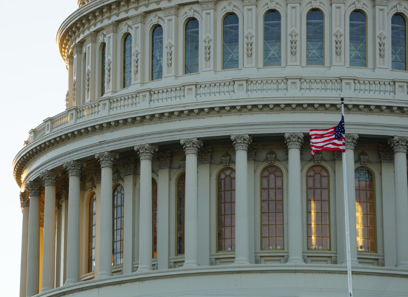Future-Proof Your Service: Secret Cybersecurity Predictions You Need to Know
As companies challenge the increasing speed of digital change, comprehending the developing landscape of cybersecurity is essential for lasting durability. Predictions recommend a substantial uptick in AI-driven cyber dangers, together with heightened governing examination and the imperative change in the direction of Zero Trust Style. To successfully navigate these obstacles, companies should reassess their security approaches and promote a culture of recognition among staff members. The implications of these changes expand beyond plain compliance; they could redefine the very structure of your operational protection. What actions should business require to not just adjust however flourish in this brand-new atmosphere?
Increase of AI-Driven Cyber Threats

Among the most worrying advancements is the usage of AI in developing deepfakes and phishing schemes that are incredibly convincing. Cybercriminals can produce sound and video clip material, impersonating executives or trusted individuals, to manipulate sufferers right into divulging sensitive details or licensing illegal deals. Furthermore, AI-driven malware can adapt in real-time to avert detection by traditional safety actions.
Organizations need to recognize the urgent requirement to reinforce their cybersecurity structures to deal with these progressing threats. This includes investing in innovative threat detection systems, cultivating a culture of cybersecurity recognition, and implementing durable event reaction strategies. As the landscape of cyber threats changes, positive steps come to be important for securing sensitive information and preserving organization stability in a significantly electronic globe.
Raised Concentrate On Information Personal Privacy
How can organizations properly browse the growing focus on information personal privacy in today's electronic landscape? As governing structures evolve and customer assumptions increase, services must focus on robust information personal privacy techniques.
Purchasing staff member training is vital, as team understanding directly impacts information protection. Organizations ought to promote a culture of personal privacy, encouraging employees to recognize the value of securing delicate information. Additionally, leveraging modern technology to boost data security is essential. Implementing sophisticated encryption methods and secure information storage space solutions can dramatically reduce dangers related to unapproved gain access to.
Partnership with lawful and IT teams is crucial to straighten data personal privacy efforts with organization purposes. Organizations should likewise involve with stakeholders, including clients, to connect their commitment to information personal privacy transparently. By proactively addressing information personal privacy issues, services can build trust and boost their credibility, inevitably adding to long-lasting success in an increasingly looked at digital environment.
The Change to No Trust Architecture
In feedback to the progressing risk landscape, organizations more information are significantly taking on No Depend on Design (ZTA) as a fundamental cybersecurity strategy. This technique is predicated on the concept of "never trust, constantly verify," which mandates continual confirmation of individual identities, devices, and information, no matter their area within or outside the network boundary.
Transitioning to ZTA includes carrying out identification and gain access to administration (IAM) options, micro-segmentation, and least-privilege access controls. By granularly controlling access to sources, organizations can minimize the threat of expert dangers and decrease the impact of outside violations. ZTA incorporates durable tracking and analytics capacities, permitting companies to detect and react to abnormalities in real-time.

The shift to ZTA is also fueled by the raising fostering of cloud services and remote work, which have expanded the strike surface (cyber attacks). Conventional perimeter-based safety versions are not enough in this brand-new landscape, making ZTA an extra resilient and flexible structure
As cyber hazards continue to grow in elegance, the adoption of Zero Trust concepts will certainly be essential for companies seeking to protect their possessions and keep regulative compliance while making sure organization connection site link in an unpredictable atmosphere.
Regulative Changes coming up

Upcoming regulations are anticipated to deal with a variety of concerns, including information personal privacy, breach notice, and incident reaction methods. The General Data Protection Regulation (GDPR) in Europe has established a precedent, and comparable frameworks are arising in other regions, such as the United States with the proposed government privacy regulations. These regulations frequently enforce stringent charges for non-compliance, emphasizing the need for organizations to prioritize their cybersecurity actions.
In addition, markets such as finance, healthcare, and crucial facilities are most likely to deal with much more rigorous demands, reflecting the delicate nature of the data they take care of. Compliance will certainly not just be a legal commitment address but an essential part of structure trust with clients and stakeholders. Organizations must remain in advance of these adjustments, incorporating regulatory needs into their cybersecurity strategies to make sure strength and safeguard their assets effectively.
Importance of Cybersecurity Training
Why is cybersecurity training a vital component of a company's defense technique? In an age where cyber threats are progressively innovative, companies need to acknowledge that their workers are commonly the first line of protection. Efficient cybersecurity training furnishes staff with the understanding to identify prospective hazards, such as phishing assaults, malware, and social engineering tactics.
By promoting a society of protection awareness, organizations can significantly reduce the risk of human mistake, which is a leading cause of data violations. Routine training sessions make sure that workers stay informed regarding the current threats and finest methods, consequently boosting their capability to respond appropriately to cases.
In addition, cybersecurity training advertises conformity with governing needs, minimizing the threat of lawful repercussions and punitive damages. It additionally empowers employees to take ownership of their duty in the company's safety and security structure, bring about a proactive as opposed to responsive approach to cybersecurity.
Verdict
In final thought, the developing landscape of cybersecurity demands proactive steps to deal with emerging threats. The rise of AI-driven strikes, paired with enhanced information privacy problems and the shift to Zero Trust Style, requires a comprehensive strategy to security.